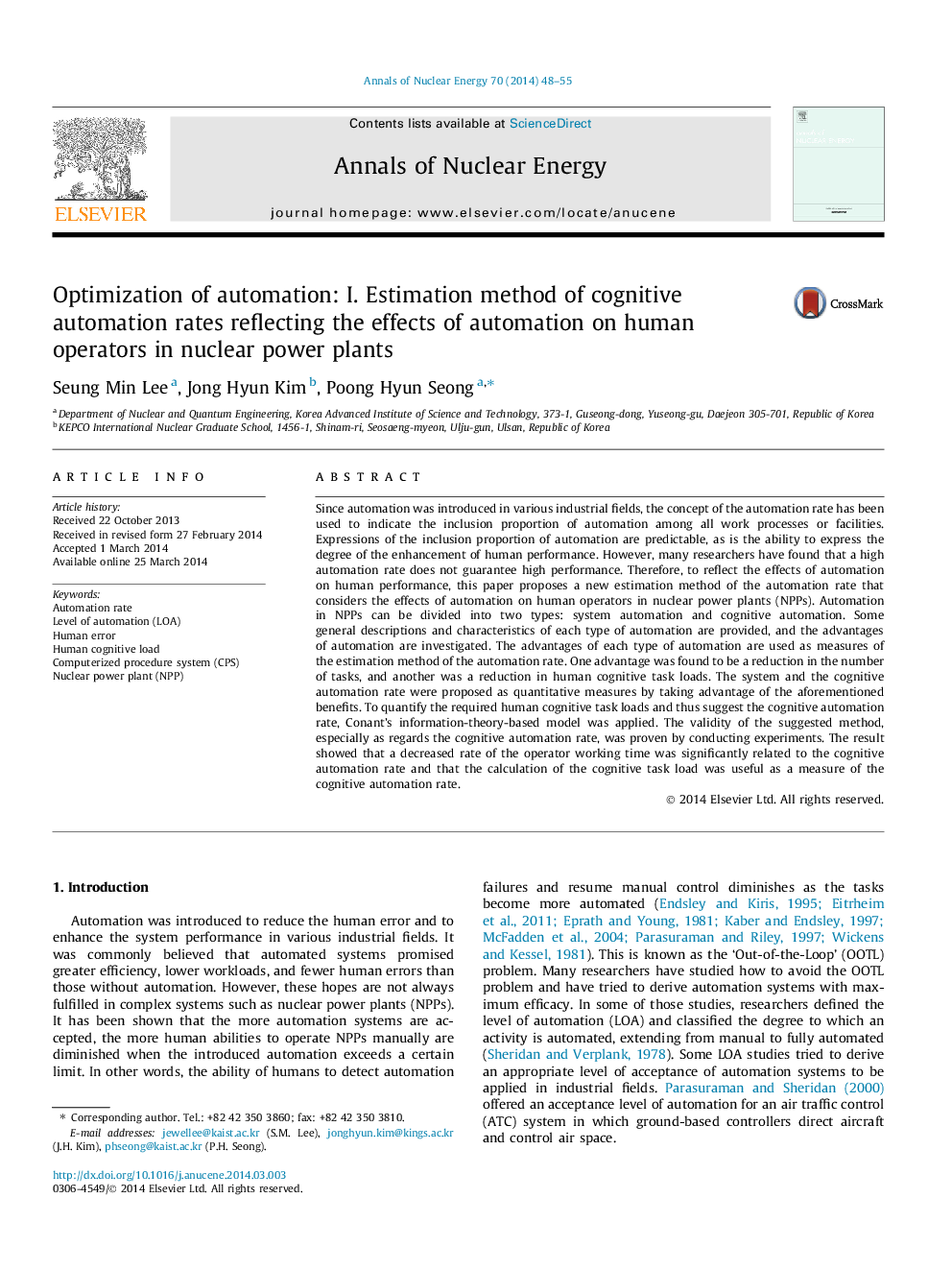| Article ID | Journal | Published Year | Pages | File Type |
|---|---|---|---|---|
| 1728308 | Annals of Nuclear Energy | 2014 | 8 Pages |
•We propose an estimation method of the automation rate by taking the advantages of automation as the estimation measures.•We conduct the experiments to examine the validity of the suggested method.•The higher the cognitive automation rate is, the greater the decreased rate of the working time will be.•The usefulness of the suggested estimation method is proved by statistical analyses.
Since automation was introduced in various industrial fields, the concept of the automation rate has been used to indicate the inclusion proportion of automation among all work processes or facilities. Expressions of the inclusion proportion of automation are predictable, as is the ability to express the degree of the enhancement of human performance. However, many researchers have found that a high automation rate does not guarantee high performance. Therefore, to reflect the effects of automation on human performance, this paper proposes a new estimation method of the automation rate that considers the effects of automation on human operators in nuclear power plants (NPPs). Automation in NPPs can be divided into two types: system automation and cognitive automation. Some general descriptions and characteristics of each type of automation are provided, and the advantages of automation are investigated. The advantages of each type of automation are used as measures of the estimation method of the automation rate. One advantage was found to be a reduction in the number of tasks, and another was a reduction in human cognitive task loads. The system and the cognitive automation rate were proposed as quantitative measures by taking advantage of the aforementioned benefits. To quantify the required human cognitive task loads and thus suggest the cognitive automation rate, Conant’s information-theory-based model was applied. The validity of the suggested method, especially as regards the cognitive automation rate, was proven by conducting experiments. The result showed that a decreased rate of the operator working time was significantly related to the cognitive automation rate and that the calculation of the cognitive task load was useful as a measure of the cognitive automation rate.
